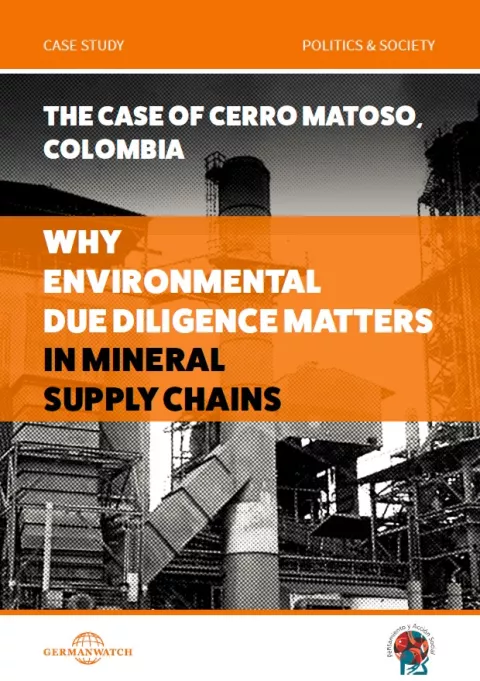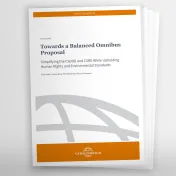
In the last year, the German government held intense and controversial discussions on the introduction and design of national due diligence regulation. However, environmental aspects of corporate due diligence were given little attention. By contrast, the debate at European level is already much more progressive. On January 27, the Legal Affairs Committee of the European Parliament explicitly recommended the inclusion of independent environmental due diligence requirements in a future European due diligence legislation.
Environmental due diligence has not only the potential to improve environmental protection along global value chains, but, as the present case study from Colombia illustrates, might also be a suitable approach for the prevention of human rights violations. Further, it is often complicated to make corporates responsible for human rights violations (e.g. health damages) that result from slow processes of environmental pollution by the companies. Future approaches of environmental due diligence should address these challenges by defining requirements for risk based environmental management along supply chains. Our study aims to make an important contribution to this debate through the analysis of a concrete case and through the perspective of a Colombian civil society group. This study was jointly elaborated with Pensamiento y Acción Social.
Case Study:
The Colombian extraction project of Cerro Matoso is situated in the south of the department of Córdoba. The region is considered the most critical in terms of human rights violations during the internal armed conflict in Colombia. The local communities accuse BHP Group and South 32 (which demerged from BHP in 2015) of contributing to the aggravation of their living conditions. The mine has lacked proper environmental conservation measures for decades, leading to the pollution of water, soil and air with toxins that have devastating consequences for the health of the population. Environmental governance and institutional accountability in this conflict and post-conflict setting is weak.
The study points to the difficulties of holding companies responsible for health damages in the population that are linked to environmental pollution caused by companies. The Cerro Matoso case was heard by the Constitutional Court of Colombia. Here, conflicting assessments were made about the cause-effect relationship between human health, environmental damage and mining activities. Due to the difficulty in establishing a clear link between the damage to health and past corporate activities, the compensation payments initially ordered by the court were subsequently annulled. Further, the environmental licence and defined measures were so unspecific that it was not possible to make Cerro Matoso responsible for the environmental damage it caused.
Better preventive environmental protection by Cerro Matoso might have avoided serious human rights violations in the neighboring communities. A corresponding environmental approach should therefore also be anchored in corporate due diligence obligations. It is important to design environmental due diligence requirements in such a way, that they define concrete and environmental specific obligations for corporates along their value chains. This would make it clear to companies which measures and responsibilities they must take to protect the environment. In the event of damage, it would thus be possible to determine the responsibility of companies in relation to their level of disregard of environmental due diligence. Compared to a solely human rights approach, environment-related due diligence would make complicated procedures for determining the cause-effect relationship between corporate activity, environmental damage and health impact could obsolet.



